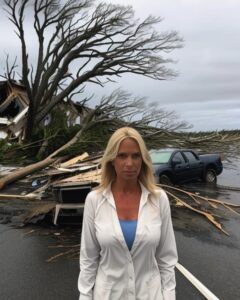Coastal communities worldwide find themselves on the frontlines of climate change, grappling with rising sea levels and an uptick in extreme weather events. These powerful dynamics are drastically altering coastlines, displacing ecosystems, and threatening the existence and prosperity of millions. This article examines the profound impact these changes are having on coastal areas globally and underscores the urgent need for climate action and adaptive measures.
The increasing sea levels stand out as one of the most ominous impacts of climate change. Driven mainly by the thermal expansion of warming seawater and the accelerated melting of glaciers and polar ice caps, sea level rise has reached unprecedented rates. As reported by the Intergovernmental Panel on Climate Change (IPCC), global sea levels have surged by about 8 to 9 inches since 1880, with the rate climbing faster in recent decades.
This rise in sea levels intensifies coastal erosion, resulting in the loss of critical land and habitats. Beaches, marshlands, and mangrove forests are being swallowed at alarming rates, diminishing their capacity to shield inland areas from storm surges and flooding. For instance, in Louisiana, USA, a football field-sized swath of wetland disappears every 100 minutes due to a combination of sea level rise, land subsidence, and human intervention.
The infrastructure in coastal regions is particularly susceptible to the encroaching seas. Low-lying areas see roads, bridges, and buildings increasingly prone to flooding and damage. In cities like Miami, recurrent “sunny day” flooding occurs when high tides alone cause streets and neighborhoods to be submerged, disrupting daily life and inflicting hefty economic costs on communities.
Climate change not only raises sea levels but also contributes to more frequent and severe extreme weather events—hurricanes, typhoons, and cyclones—that hammer coastal areas with devastating winds, heavy rainfall, and formidable storm surges.
The severity and destructive power of hurricanes have amplified due to warmer ocean temperatures, which supply more energy to these storms. Hurricanes such as Katrina (2005), Sandy (2012), and Maria (2017) illustrate the immense catastrophic potential embedded within these natural phenomena. In the Philippines, Typhoon Haiyan (2013) highlighted the significant vulnerability of coastal regions to extreme weather events by causing massive loss of life and property.
Beyond their physical impact, rising sea levels and severe weather events precipitate deep socioeconomic consequences for coastal communities, including displacement, economic dislocation, and heightened health risks.
Coastal erosion, frequent flooding, and storm-induced destruction compel many residents to relocate. Data from the Internal Displacement Monitoring Centre (IDMC) indicate that millions are displaced annually due to climate-related disasters. For nations such as Kiribati and the Maldives, rising seas could render entire communities uninhabitable, sparking urgent dialogues around population relocation.
Economic sectors pivotal to coastal communities—such as fishing, tourism, and agriculture—bear significant vulnerability to environmental shifts. Saltwater intrusion from rising seas affects agriculture and freshwater resources. Damages to coral reefs and coastal ecosystems undermine fisheries and tourism economies, leading to considerable financial setbacks.
Confronting the impact of climate change on coastal areas necessitates robust mitigation and adaptation strategies. Mitigation involves cutting down greenhouse gas emissions to curb further warming. Concurrently, adaptation entails bracing for and managing the climate effects that are currently unavoidable.
Bolstering resilience in coastal communities involves substantial investment in resilient infrastructure capable of withstanding extreme conditions and rising waters. This means erecting seawalls, enhancing drainage systems, enforcing zoning regulations to prevent development in risk-prone areas, and restoring natural barriers like wetlands, mangroves, and coral reefs that guard against storm surges and erosion.
Improving early warning systems and emergency preparedness is also critical for mitigating the effects of extreme weather events. Providing timely warnings enables communities to evacuate proactively and safeguard property before disasters hit. Public education campaigns and community drills enhance readiness and emergency response effectiveness.
Effective climate action mandates robust policy frameworks and global collaboration. Governments must integrate climate adaptation into their strategic planning, earmarking resources for susceptible coastal regions. International agreements such as the Paris Agreement serve as crucial conduits for fostering global cooperation in tackling climate change.
The ongoing impact of climate change on coastal communities serves as a stark reminder of the necessity for immediate action. Rising sea levels and extreme weather events are continually reshaping coastlines, disrupting ecosystems, and jeopardizing countless lives. Through diligent investment in resilience measures, heightened preparedness protocols, and strong international cooperation, we can mitigate these impacts and safeguard coastal communities for future generations. The imperative for action is clear—the time to act is now.

